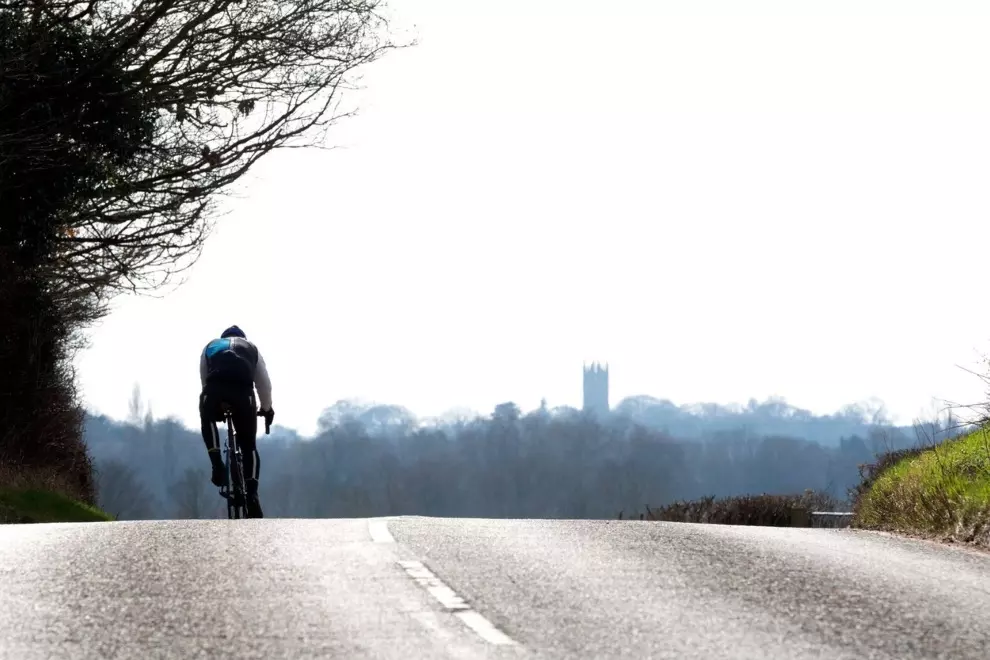Maybe you’ve camped in winter before but never by bike or perhaps you’re a seasoned bikepacking pro but only in summer. Combining the two requires another level of packing, and probably a change in your gear and set-up. So, where to begin?
The right bike
As with many bikepacking trips, you might struggle to choose the ‘perfect’ bike – with changing terrain and different preferences in carrying capacity. But your bike should certainly be able to handle winter, especially if you’re in a fat-bike territory or if you need plenty of extra room to carry the biggest and warmest sleeping bag you can find.
Clothing
On the bike: dressing for winter on the bike is tough, though off-road riding can be significantly easier to manage temperature-wise than road riding as you’re likely not going quite as fast. Layering is crucial to manage insulation, as well as when you’re working hard on the climbs or descending fast. A good base layer – not one made of cotton, to wick sweat –followed by your insulating layers and then a windproof and/or waterproof layer on top. If it’s wet, you’ll want to stick to synthetic layers but if it’s dry, then down is a great option for warmth with minimal weight.
Off the bike: the weather may dictate how many sets of clothes you’ll want to take but the fewer the better, as more clothes = a heavier bike. If it’s dry, you can likely get away with one set for riding and one set for evenings (depending on the length of your trip, of course). Something with anti-odour or anti-bacterial properties like wool is good. If it’s wet, then depending on when you can dry your clothes will determine whether you bring an extra set for the day.

Footwear
Wool socks with insulated, waterproof boots should keep your feet warm and dry – just remember they shouldn’t be too tight as you may get cold due to a lack of circulation! If it’s particularly wet and/or cold, then neoprene overshoes can be used for added protection.
A spare pair of socks for the evening wouldn’t go amiss either in case your feet do get wet – but if you’re one of those people whoare very serious about going lightweight, you may forgo the second pair.
Sleeping
Depending on how ‘wintery’ it is where you are will determine how extreme you go with your sleep set-up, as you still want to keep the weight down where possible. Equally, you’ll want a good night’s rest on your adventure, so be sure you’ll be warm.
As well as a warm sleeping bag with a comfort rating around the lowest you may experience overnight, you will want to invest in a sleeping pad with a high R-value or one that is rated for year-round use, like this NeoAir XTherm. Ensure your tent is up to the job too, with a snow skirt if necessary if the conditions are extreme.
Cooking
Some bikepackers choose to leave their cooking gear at home, lightening their load and eating in cafes and restaurants along their route or carrying food that doesn’t need cooking. But for others, cooking is part of the camping experience and a hot meal at the end of a cold day’s ride will be just the fuel you need since your body burns more calories to keep warm. If you do choose to carry a stove, check it can handle cold conditions and be aware that your fuel may not burn as efficiently in cold temperatures.
Electricals
One thing to bear in mind in winter is how the cold can affect your devices. Batteries can drain quicker in the cold so keep these protected or close to your body and consider taking a spare.
Bikepacking in winter, especially in the wilderness, can be a risky activity, so make sure your phone is fully charged before you head out, as well as your power bank (or two). If you’re going really remote, then a satellite communicator could be a useful addition to your packing list.
Extra tips
- Have you updated your first aid kit to treat the challenges that come with cold weather? You could carry chemical hot packs as well as a foil blanket in the event of an emergency.
- Carry insulated water bottles to prevent freezing.
- If you’re carrying a stove, a small Nalgene filled with warm water inside a sock makes a great addition to your sleeping bag at night.
So there you have it, a whirlwind insight into the basics of a winter bikepacking mission. Remember too that it might take you a couple of trips to get your setup just how you like it, and you may even be a little uncomfortable if it is really cold. But all of that is worthwhile when you experience a winter’s night sky in the wilderness or an evening around the campfire knowing you got there by pedal power.




